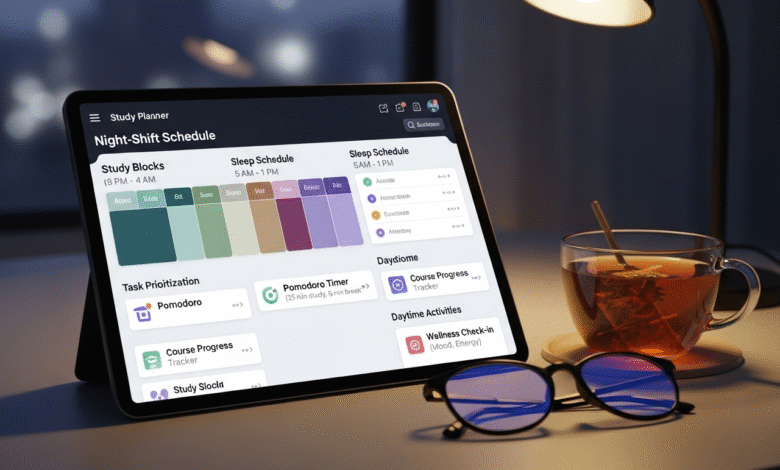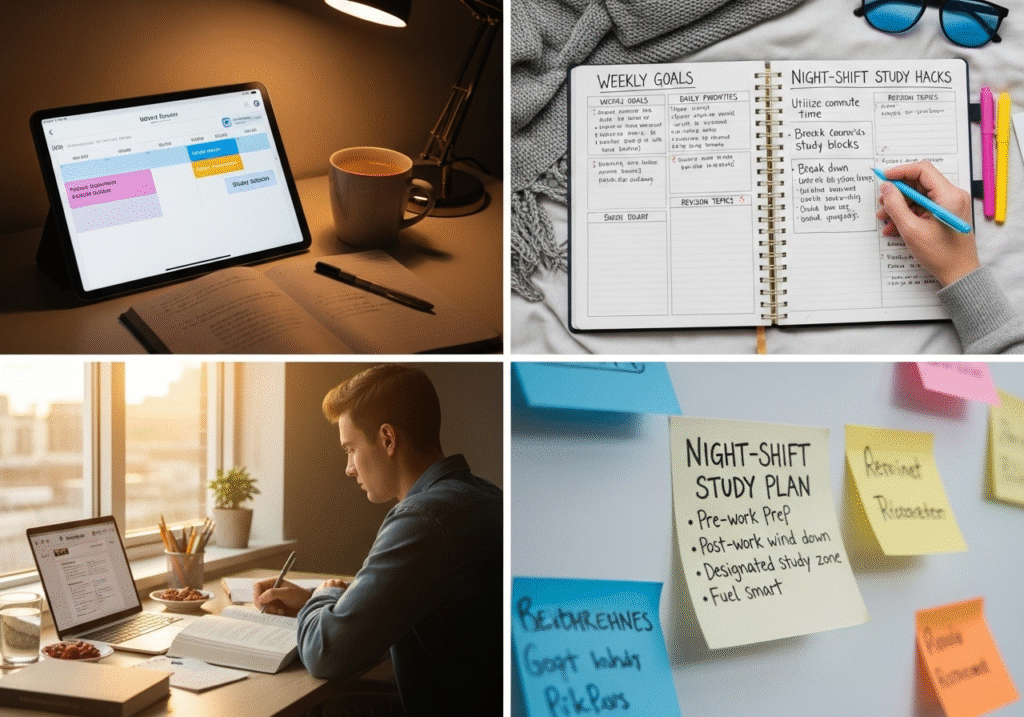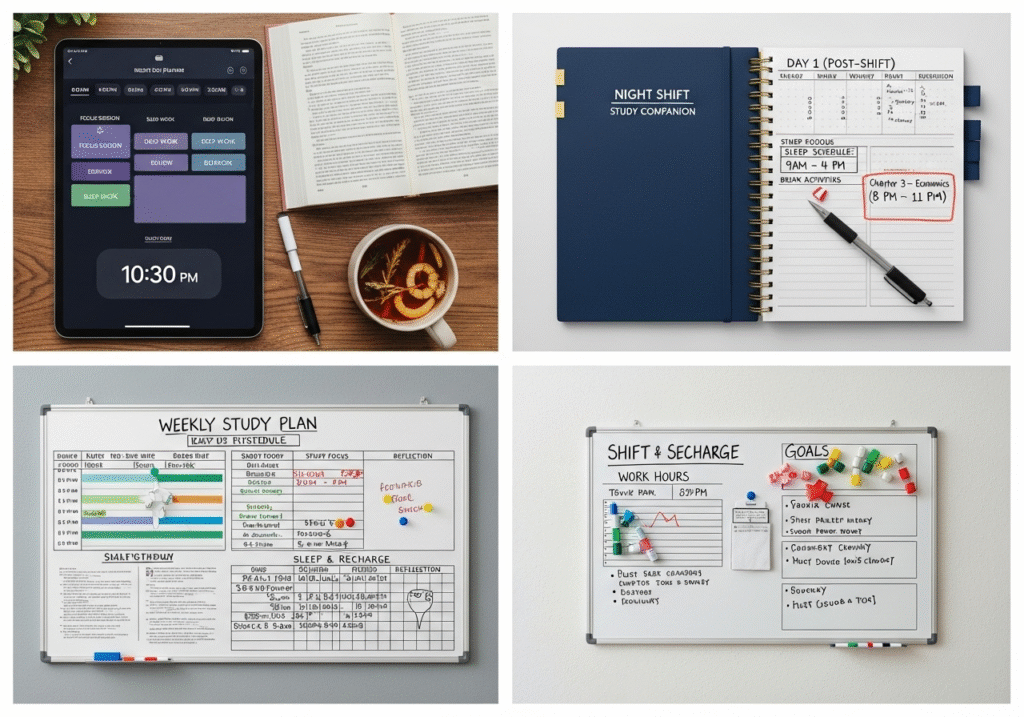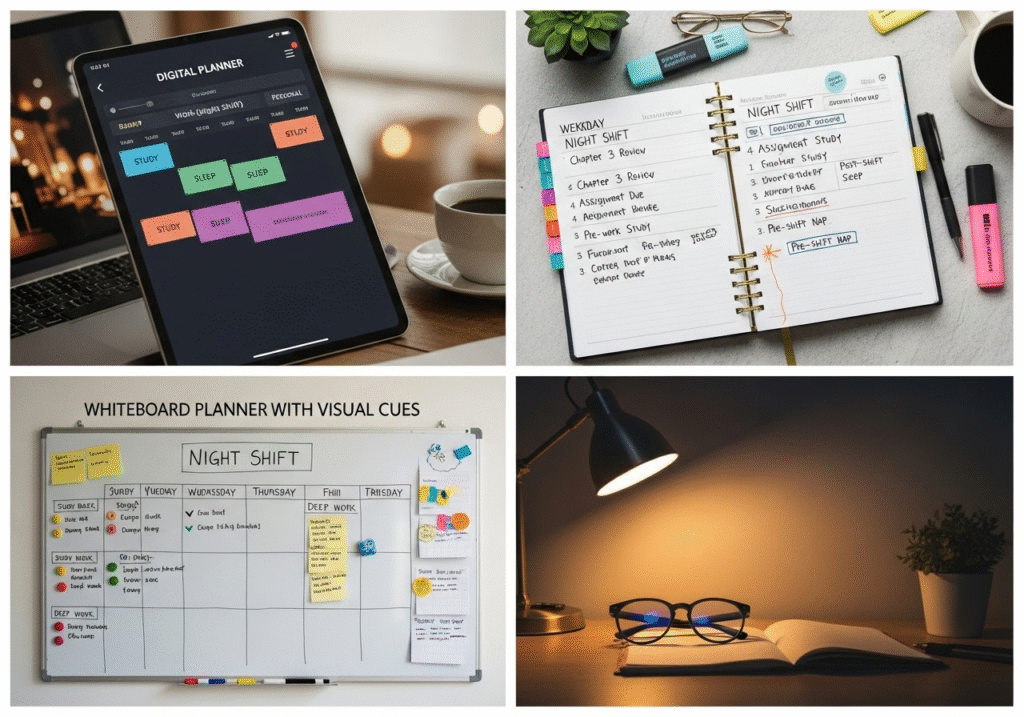
Do you ever feel like your study goals and your night-shift schedule just don’t get along? You’re not alone. Many students who work late hours struggle with staying awake during classes, managing their sleep, and keeping up with assignments. The good news is that you don’t need to sacrifice your education for your job. With the right best study planner for night-shift students, you can balance work, rest, and learning in a way that feels doable.
In this guide, you’ll discover five secrets that will help you design the best study planner tailored to your lifestyle.
Table of Contents
Why You Need a Study Planner as a Night-Shift Student

Working at night changes everything—your sleep cycle, your focus, and even your energy levels. Without structure, you may end up:
- Skipping study sessions because you feel too tired.
- Forgetting deadlines since your brain isn’t working on a “normal” clock.
- Losing sleep, which makes it even harder to stay sharp.
A well-designed planner helps you:
- Stay organized despite irregular hours.
- Make time for study sessions when you’re most alert.
- Protect your sleep while still meeting academic goals.
Secret 1: Prioritize Sleep Before Study
Your body isn’t a machine—you can’t run on empty. One of the biggest mistakes night-shift students make is pushing study before sleep. Here’s the secret: plan your rest first, then build study blocks around it.
👉 Example: If you finish work at 7 AM, sleep until early afternoon before you start studying. You’ll focus better, retain more information, and avoid burnout.
Quick Tip: Use blackout curtains or a sleep mask to block daylight and make your rest deeper.
Secret 2: Identify Your Peak Energy Hours
Everyone has a natural rhythm. For night-shift students, your most productive study time might be:
- Late afternoon after waking up.
- Early morning before heading to your shift.
Your planner should revolve around these energy peaks. Don’t force yourself to study at your lowest point—it won’t stick.
Pro Tip: Keep track of when you feel sharpest for one week, then lock those times into your planner.
Secret 3: Break Study Into Small Sessions
A three-hour block after a long shift sounds good on paper but usually fails in reality. Instead, break your sessions into shorter bursts.
- 25–30 minutes of focused study
- 5–10 minutes of rest
- Repeat for 2–3 cycles
This method (often called the Pomodoro technique) keeps your brain engaged without overwhelming you.
Planner Hack: Color-code your planner with red for study, blue for sleep, green for meals, and yellow for breaks.
Secret 4: Use Digital Tools That Adapt to Your Schedule
Paper planners work well, but digital tools make life easier when shifts change. Some great options:
- Google Calendar – Sync across devices, set reminders.
- Notion – Combine tasks, notes, and study materials in one place.
- Trello – Visualize projects with boards and lists.
Digital planners let you drag and drop tasks instead of rewriting everything when your shift changes.
Secret 5: Balance Study With Self-Care
The best study planner isn’t just about classes—it’s about your whole lifestyle. That means including:
- Meal times (fuel your brain with balanced food).
- Exercise (even 15 minutes improves focus).
- Relaxation (reading, meditation, or a hobby).
When your planner respects both study and health, you avoid burnout and keep your body in sync.
Study Tips for Night-Shift Students: 9 Secrets for Better Sleep
Sample Study Planner for Night-Shift Students

Here’s a simple example you can adapt:
| Time | Activity | Notes |
| 7 AM | Sleep | Aim for 6–7 hours |
| 2 PM | Wake up & eat | Light meal for energy |
| 3 PM | Study Session 1 | Focus on priority subjects |
| 5 PM | Break/Exercise | Short walk or stretch |
| 6 PM | Study Session 2 | Review notes, light tasks |
| 8 PM | Work shift | Stay hydrated |
| 6 AM | Quick Review | Light recap before bed |
FAQs About the Best Study Planner for Night-Shift Students
Q1: How many hours should I study if I work night shifts?
Aim for 2–4 focused hours spread throughout the day instead of one long block.
Q2: Is it better to use a paper or digital planner?
Digital planners work better if your shifts change often, but paper helps minimize screen fatigue.
Q3: What’s the best way to avoid procrastination?
Break big tasks into smaller ones and schedule them at your energy peaks.
Q4: Can a planner really improve my sleep?
Yes. By blocking rest first, you create a healthier balance between study and recovery.
Q5: What if I can’t stick to my planner?
Start small—plan just one or two tasks daily until it becomes a habit.
Study Tips for Night-Shift Students: 9 Secrets for Better Sleep
Conclusion: Take Control of Your Time

Balancing school and night shifts isn’t easy, but it’s absolutely possible when you have the right plan. By using these five secrets—prioritizing sleep, finding your energy peaks, studying in short bursts, relying on digital tools, and balancing self-care—you can design a study planner that works for you instead of against you.
Don’t wait for the perfect time to start. Begin shaping your best study planner for night-shift students today and take back control of your schedule, your energy, and your success.
👉 What’s one change you’ll add to your study routine this week? Share it with us—we’d love to hear your journey!



